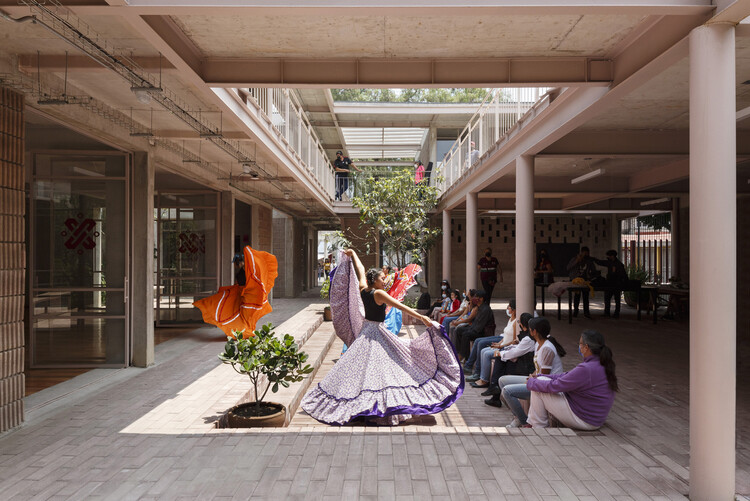 PILARES Presidentes de México / Rozana Montiel | Estudio de Arquitectura © Sandra Pereznieto
PILARES Presidentes de México / Rozana Montiel | Estudio de Arquitectura © Sandra Pereznieto
Share
Or
https://www.archdaily.com/1035073/democratizing-access-to-culture-the-past-present-and-future-of-cultural-centers
The cultural center is an architectural typology that has fascinated architects and urban planners for decades. Whether due to its multifaceted program, its often emblematic scale, or its potential to transform the urban context in which it is inserted, it is a building type that carries strong symbolic and conceptual value. The wide circulation of international references—many designed by renowned architects—reinforces the aura of prestige associated with this program, frequently seen as a privileged ground for formal and conceptual experimentation. Not by chance, cultural center designs are among the most recurring themes in competitions, exhibitions, and academic studios.
Yet behind this contemporary fascination lies a complex history in which the notion of space dedicated to culture has been redefined over time, gradually taking the form we recognize today. This ongoing evolution invites us to reflect not only on the historical path of these spaces but also on the possibilities that will shape their future.
Known for their openness and programmatic diversity, contemporary cultural centers host exhibitions, performances, workshops, and community activities in a single place. However, this is not a new typology. Historically, scholars argue that cultural spaces have always existed within civilizations as places of gathering and knowledge exchange. Although far from being called cultural centers, the Library of Alexandria, for example, is often cited as the first expression of this ambition: a complex that brought together a library, observatories, amphitheaters, gardens, and temples.
Related Article From Favela to the World: The Story Behind the Lá da Favelinha Cultural Center
Culture was probably discussed in the Library of Alexandria. There has always been [in the history of human civilization] a space to store ideas, whether recorded on clay, papyrus, or paper. – Luís Milanesi
At its origin, the cultural center can be understood as a space for storing and exchanging ideas, initially materialized in institutions such as libraries and theaters. However, although they share the same roots, these institutions differ widely from what we now consider cultural centers. While access to the Library of Alexandria required permission from the king of Egypt, access to a cultural center is, in principle, open to all. The essential distinction lies in the democratization of art and culture—a concept that only gained prominence in the late 1950s in countries such as England and France.
The growing appreciation of leisure, seen as a hallmark of industrial society, led French companies to promote the creation of spaces for social interaction, sports, and recreation. These ideas extended to libraries and educational centers, transforming them into cultural houses. It was then that the first definitions of cultural spaces emerged, understood as “cultural institutions that establish spaces to create and experience art, allowing an environment of informal learning and knowledge exchange.”
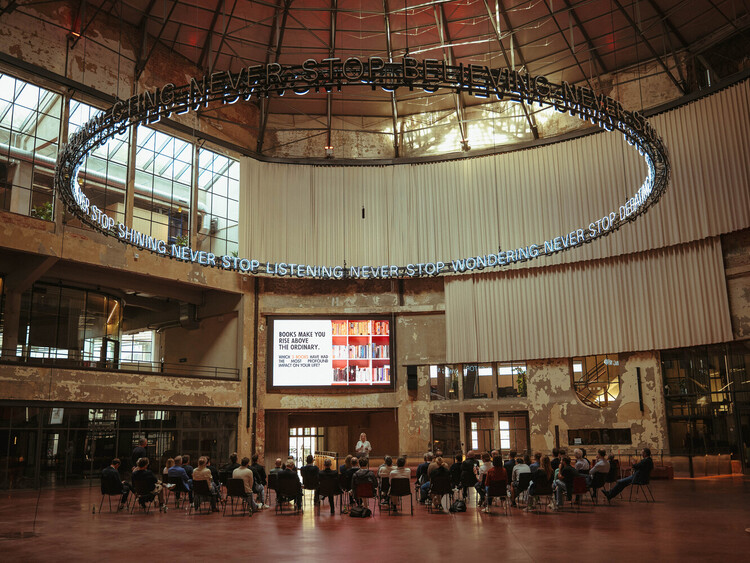 Wintercircus Technological and Cultural Hub / OYO © Farah Lieten
Wintercircus Technological and Cultural Hub / OYO © Farah Lieten
At the same time, in the socialist bloc of Eastern Europe, cultural spaces assumed a distinctly political role. Countries such as the Soviet Union, Poland, and East Germany created the Houses of Culture (Dom Kultury), state-run centers aimed at spreading socialism and ideological formation. Although they offered artistic, sporting, and educational activities, they operated under strict state control. Paradoxically, these institutions also expanded access to culture by leaving behind an infrastructure that, after the fall of socialism, became the foundation for new community initiatives.
Whether culture was presented under the guise of indoctrination or in a supposedly neutral way—if such neutrality is even possible—it is important to note that during this period, the concept of culture itself underwent a profound transformation. It ceased to be viewed as a fixed heritage and came to be understood as a process and a social practice. Art shifted its focus from the object to the subject, emphasizing the audience and its context. This shift opened the way for cultural democratization policies and the creation of spaces oriented toward civic participation.
If in Eastern Europe cultural centers served as tools for ideological doctrine, in France the idea of culture as a right and as participation took on another form—less tied to the State and more aligned with citizenship. The Maisons de la Culture sought to decentralize cultural access and promote cultural development beyond major urban centers. This ideal reached its peak with the opening of the Centre Georges Pompidou in Paris in 1977.
Designed by Renzo Piano and Richard Rogers, the Pompidou redefined the role of cultural facilities by integrating a museum, library, cinema, and public spaces into a transparent, communicative building that turned art into part of daily life. Its impact stemmed not only from its disruptive architecture, which contrasted sharply with the Parisian context, but also from its innovative programming, bringing diverse activities together in a fluid space. The absence of barriers between the public and the collection—especially in the library—reinforces this idea of openness, allowing visitors to explore, compare, and interact freely with knowledge.
Although widely criticized by thinkers such as Jean Baudrillard—who described it as a “cultural hypermarket” that turned culture into spectacle and commodity—the Pompidou marked a historic turning point: for the first time, culture attracted mass audiences. Its creation had a global impact, inspiring the development of new cultural centers around the world.
In Latin America, its emergence coincided with political redemocratization and the strengthening of cultural access policies, resulting in innovative spaces that broke away from the rigidity of traditional institutions. SESC Pompeia in São Paulo, designed by Lina Bo Bardi, embodies this vision by transforming an old factory into a public space where leisure, culture, and education are integrated in an accessible, participatory environment. This conception of culture as a collective practice resonates in other recent projects, such as Centro Cultural Lá da Favelinha in Belo Horizonte, Brazil, and the PILARES network in Mexico City, which promote learning, sports, and social connection in peripheral communities. These projects reaffirm cultural centers as democratic places of community building.
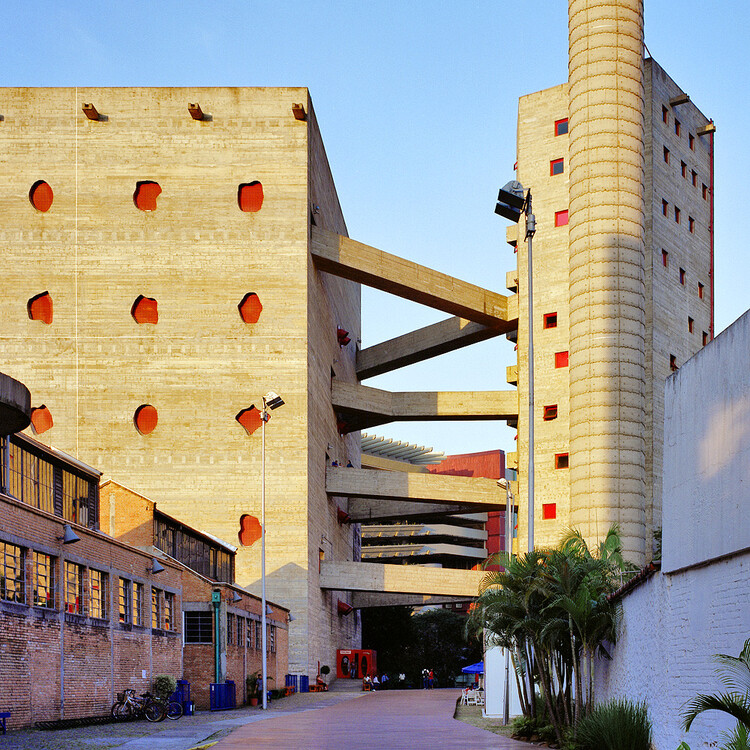 SESC Pompéia / Lina Bo Bardi © Pedro Kok
SESC Pompéia / Lina Bo Bardi © Pedro Kok
However, their form continues to transform and foster new challenges. In recent decades, a new phase has emerged, marked by the incorporation of values related to technological innovation and digital transformations. The advancement of artificial intelligence and immersive technologies has expanded the educational and interactive role of these spaces, transforming visitors into co-authors of cultural experiences. Digital curation systems, automated mediations, and hybrid experiences between the physical and virtual challenge traditional models of enjoyment, redefining what it means to “be present” in a cultural space. Is this, therefore, the strategy to ensure that these spaces maintain vitality and relevance in the face of the growing digitization of social and cultural life?
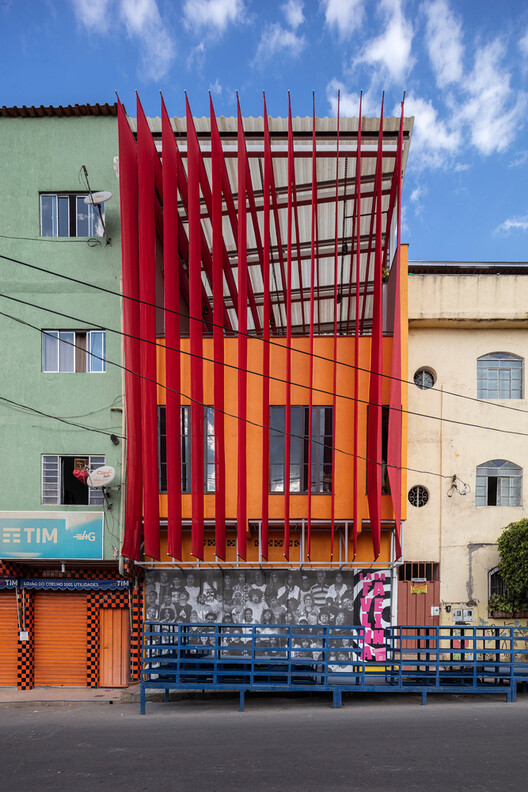 Lá da Favelinha Cultural Center / Coletivo LEVANTE. Image © Leonardo Finotti
Lá da Favelinha Cultural Center / Coletivo LEVANTE. Image © Leonardo Finotti
Furthermore, in today’s world—marked by narrative disputes, subtle censorship, and growing dependence on corporate sponsorship—the line between support and control, access and surveillance, has once again become tenuous. The contemporary challenge, therefore, is not only to maintain democratized access, but to preserve creative autonomy in the face of political, economic, and technological forces that shape cultural spaces. How, then, can architecture safeguard cultural democratization in increasingly privatized urban contexts?
The questions are many, but perhaps this is precisely the role of cultural centers: to provoke reflection. Despite all their nuances, it is possible to say that the future of these spaces lies in their ability to build networks, sustain practices of listening and co-creation, and foster experimentation—establishing an architecture that reflects its context and remains a place where society rehearses, through culture, its possibilities for the future.
This article is part of the ArchDaily Topics: The Architecture of Culture Today. Every month, we explore a topic in-depth through articles, interviews, news, and architecture projects. We invite you to learn more about our ArchDaily Topics. And, as always, at ArchDaily we welcome the contributions of our readers; if you want to submit an article or project, contact us.

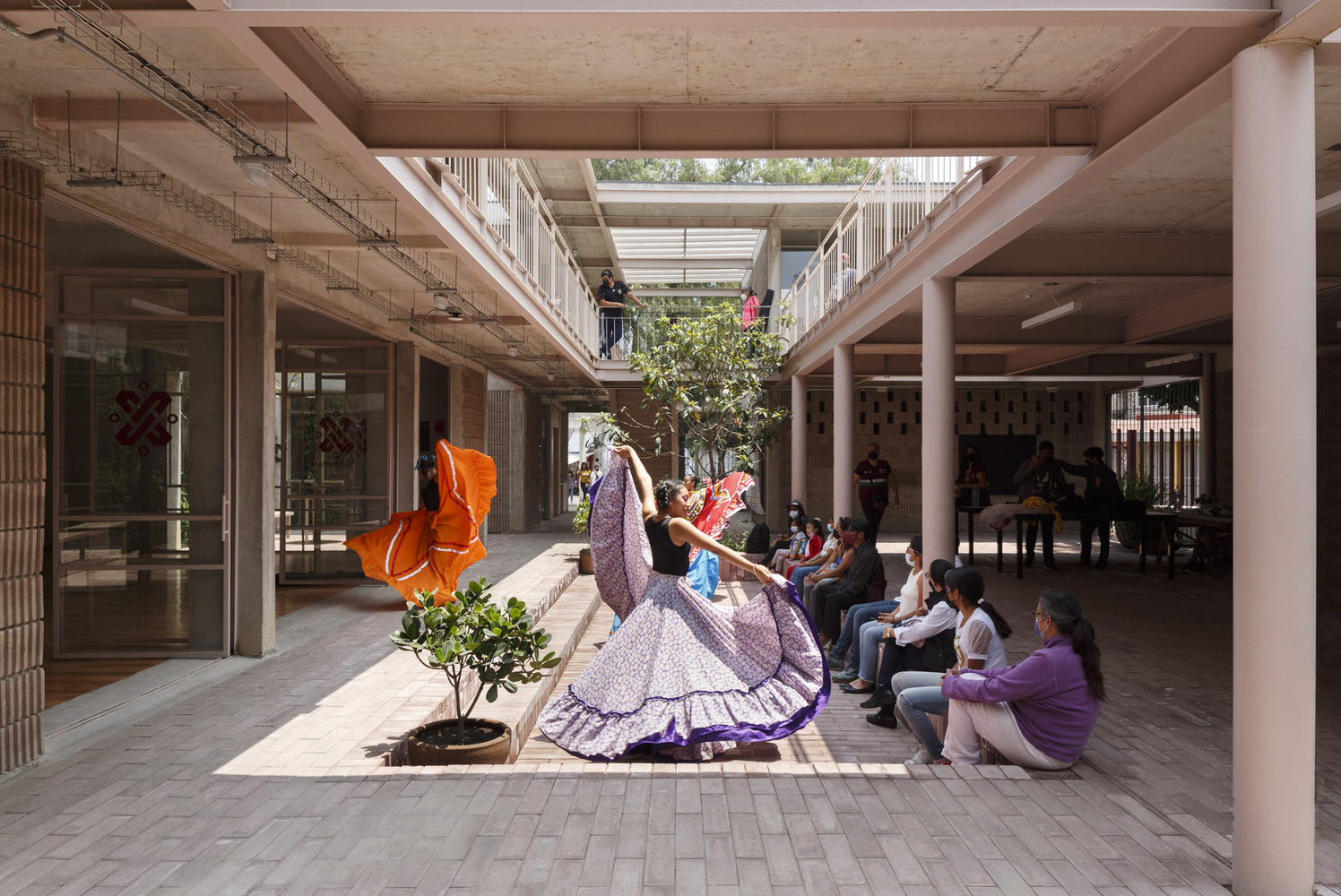
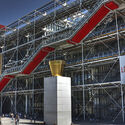
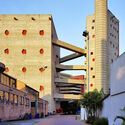
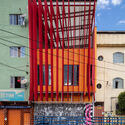
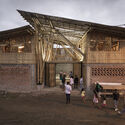
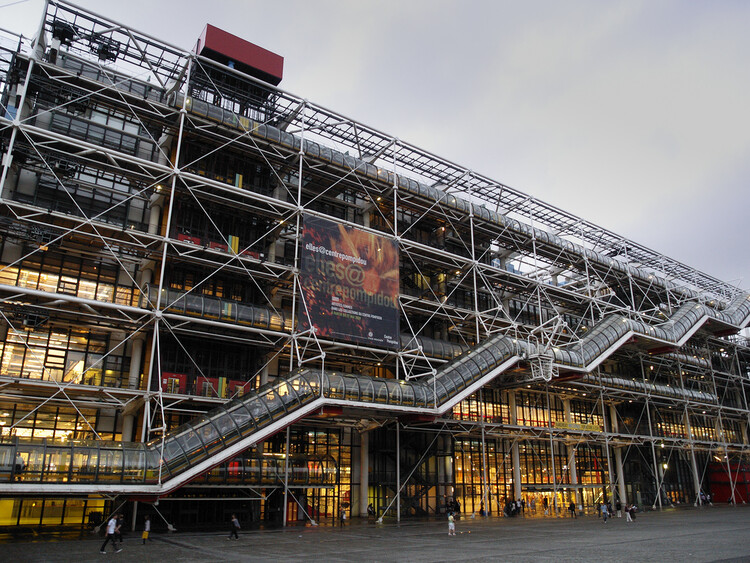 Architecture Classics: Centre Georges Pompidou / Renzo Piano Building Workshop + Richard Rogers © flickr Manolo Blanco
Architecture Classics: Centre Georges Pompidou / Renzo Piano Building Workshop + Richard Rogers © flickr Manolo Blanco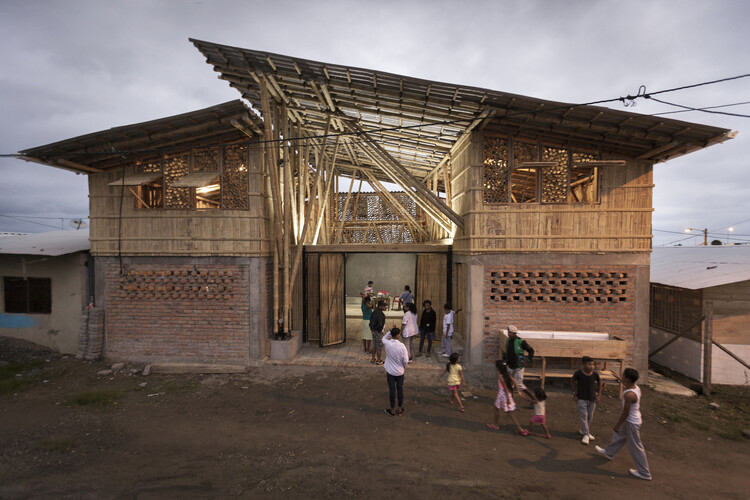 Chamanga Cultural Center / Munich University of Applied Sciences + Portland State University + Atarraya Taller de Arquitectura + Opción Más © Santiago Oviedo
Chamanga Cultural Center / Munich University of Applied Sciences + Portland State University + Atarraya Taller de Arquitectura + Opción Más © Santiago Oviedo